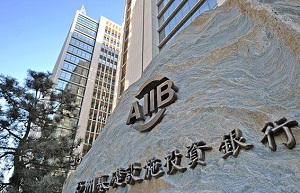 The emergence of the Asia-Pacific region as an operational center of the world economy is no secret. China’s strength among global powers, the solidity demonstrated by Japan and South Korea for years, and the rapid development of several emerging nations, make the easternmost continent the region of the future, where the largest movements of international capital are seen.
The emergence of the Asia-Pacific region as an operational center of the world economy is no secret. China’s strength among global powers, the solidity demonstrated by Japan and South Korea for years, and the rapid development of several emerging nations, make the easternmost continent the region of the future, where the largest movements of international capital are seen.
This reality contrasts with the history of this area, with the greatest concentration of the global population, which for many years was dependent on financial institutions dominated by the West and often neglectful of its principal needs.
In this context, the Asian Infrastructure Investment Bank (AIIB) emerged, with the aim of creating a solid financial system and articulating the flow of investment for the development of infrastructure in the continent.
But this new body, described by experts as the multilateral lending institution of the 21st century, also aims to rescue those areas of the region somewhat abandoned by both the World Bank and the Asian Investment Bank (AIB), as well as encourage trade and economic cooperation with other countries of Europe and Africa.
Over 400 days since it began operations, this organization, which emerged from a Chinese initiative, already has a total of 57 members and over 1.73 billion dollars approved for nine infrastructure plans in different nations of the region.
The establishment of the bank, which is currently based in Beijing, is also part of the Asian giant’s plans to recreate the ancient Silk Road and achieve greater interconnections between Asia and Europe.
The AIIB’s current capital amounts to 100 billion dollars, of which China, as the main promoter, has contributed half.
In response to claims that this enormous contribution would give Beijing almost absolute control over the organization, Chairman Lou Jiwei stated that the 50% input represents support for the new project and the participation of the Asian giant, although extensive, will gradually be reduced as new countries join the initiative.
India, Russia, Germany, and South Korea stand out as the other major shareholders in the bank, founded on June 29, 2015, and inaugurated last year.
APPROVED PROJECTS
While the AIIB’s greatest ambition is to promote Asia’s social and economic development through projects that connect people, services, and markets, it must first work to reconfigure the current outlook for certain countries of the region.
As such, among its most immediate challenges is the financing of works to modernize highways, railroads and ports, improve access to electricity, expand telecommunications services, promote urban planning and provide sanitation and potable water services – basic issues to dramatically increase connectivity between regions.
Currently, as well as monitoring financing of the “Silk Road Economic Belt and the 21st Century Maritime Silk Road”, the AIIB is participating in nine investment projects, such as the construction of a gas pipeline in Azerbaijan and the building of a commercial port terminal and new railroad system in Oman.
The bank will also provide 20 million dollars for the development, construction, and operation of the largest independent combined-cycle gas turbine power plant in Myanmar.
A loan of 216.5 million dollars has been approved to improve access to urban infrastructure and services in poor neighborhoods of Indonesia.
Meanwhile in Pakistan, Bangladesh, and Tajikistan, the bank will support the M-4 National Highway project, the expansion of the energy distribution system, and a plan to improve border highways, respectively.
According to AIIB directors, the completion of these works in strategic sectors will allow the institution to work toward more ambitious goals, such as the advance of green infrastructure to ensure the countries involved meet their development objectives, as well as those concerning care for the environment.
A NEW FINANCIAL ORDER?
According to an editorial published in The New York Times, “Countries are finding they must increasingly operate in China’s orbit.”
This probably explains why there are 20 are nations from other continents, including Germany, the United Kingdom, France, Italy and Spain, among the 57 AIIB members.
For these members of the international community, the brand-new bank offers financial advantages and for this reason they have decided to join it.
The emergence of this institution is also part of the constant struggle between the United States and China, the world’s first and second powers, respectively, to expand their influence on the global economy.
Meanwhile, it is worth noting that Beijing, despite not experiencing its best times, has decided to promote an initiative such as the AIIB with the willingness, at least, to attend to the needs of a region such as the Asia-Pacific.
Faced with the dominant and hegemonic structure of the World Bank and the International Monetary Fund, heirs to the Bretton Woods agreements following WWII, the AIIB offers an alternative to nations of the South, a novelty in the context of international financial power.
(Granma)